Top Christmas Symbols and What They Represent on T-Shirts

Blog Post Contents
You're standing in front of your closet on a chilly December morning, staring at five different christmas tee shirts. One has Santa's jolly face. Another features a geometric snowflake pattern. A third shows Rudolph with his glowing red nose. Which one do you grab? More importantly, what does your choice say about you, and what do these Christmas shirt symbols actually mean?
I've spent years analyzing holiday fashion trends and interviewing hundreds of people about their Christmas wardrobe choices. What I've discovered is that Christmas shirt symbols are far more than just festive decorations printed on fabric. They're a visual language—one that communicates our beliefs, our childhood memories, our sense of humor, and even our cultural identity. These Christmas graphics carry meanings that stretch back centuries, weaving together religious traditions, pagan rituals, commercial innovations, and personal stories.
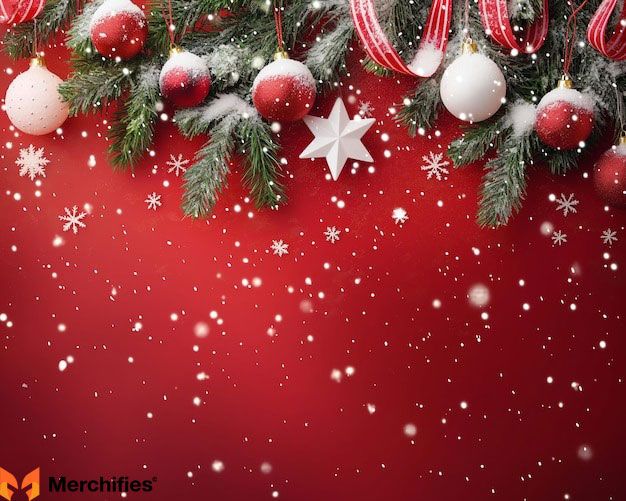
This comprehensive guide explores the fascinating world of Christmas shirt symbols, from the universally recognized trio of Santa, reindeer, and snowflakes to lesser-known graphics that carry surprising depth. You'll discover why certain symbols resonate with millions while others remain niche favorites. We'll examine the psychology behind symbol selection, the historical origins of popular Christmas graphics, and how to choose meaningful designs that align with your values and personality.
Whether you're shopping for your next Christmas shirt, designing custom holiday apparel, or simply curious about the imagery that dominates December fashion, this article will transform how you see those cheerful graphics covering sweaters, t-shirts, and hoodies every holiday season.
Understanding Christmas Shirt Symbols - The Basics
Christmas shirt symbols are visual representations of holiday themes that communicate complex ideas instantly. Unlike written text that requires reading and processing, a well-designed symbol triggers immediate recognition and emotional response. You see Santa's face on someone's chest, and your brain instantly accesses everything you know about Christmas, gift-giving, childhood wonder, and December traditions—all in a fraction of a second.
This visual communication happens because our brains process images faster than words. According to research in cognitive psychology, humans can recognize and interpret symbols in as little as 13 milliseconds. That's why Christmas shirt symbols work so effectively as social communication tools. They broadcast your holiday spirit before you say a single word.
But what exactly separates a symbol from just a decorative graphic? Symbols carry layers of meaning beyond their literal representation. A snowflake on a Christmas shirt isn't just a pretty ice crystal—it represents winter, the season's beauty, the uniqueness of each person (since no two snowflakes are identical), and potentially even religious concepts like the six days of creation. That's symbolic power.
Christmas shirt symbols fall into several categories. Religious symbols like nativity scenes, angels, and stars connect to Christian traditions surrounding Jesus Christ's birth. Secular symbols like snowmen, presents, and hot cocoa celebrate the cultural aspects of the holiday season without specific religious associations. Then there are hybrid symbols—elements that started with religious significance but evolved into broader cultural icons. Santa Claus perfectly embodies this transformation, originating from Saint Nicholas but becoming a secular symbol of generosity and childhood magic.
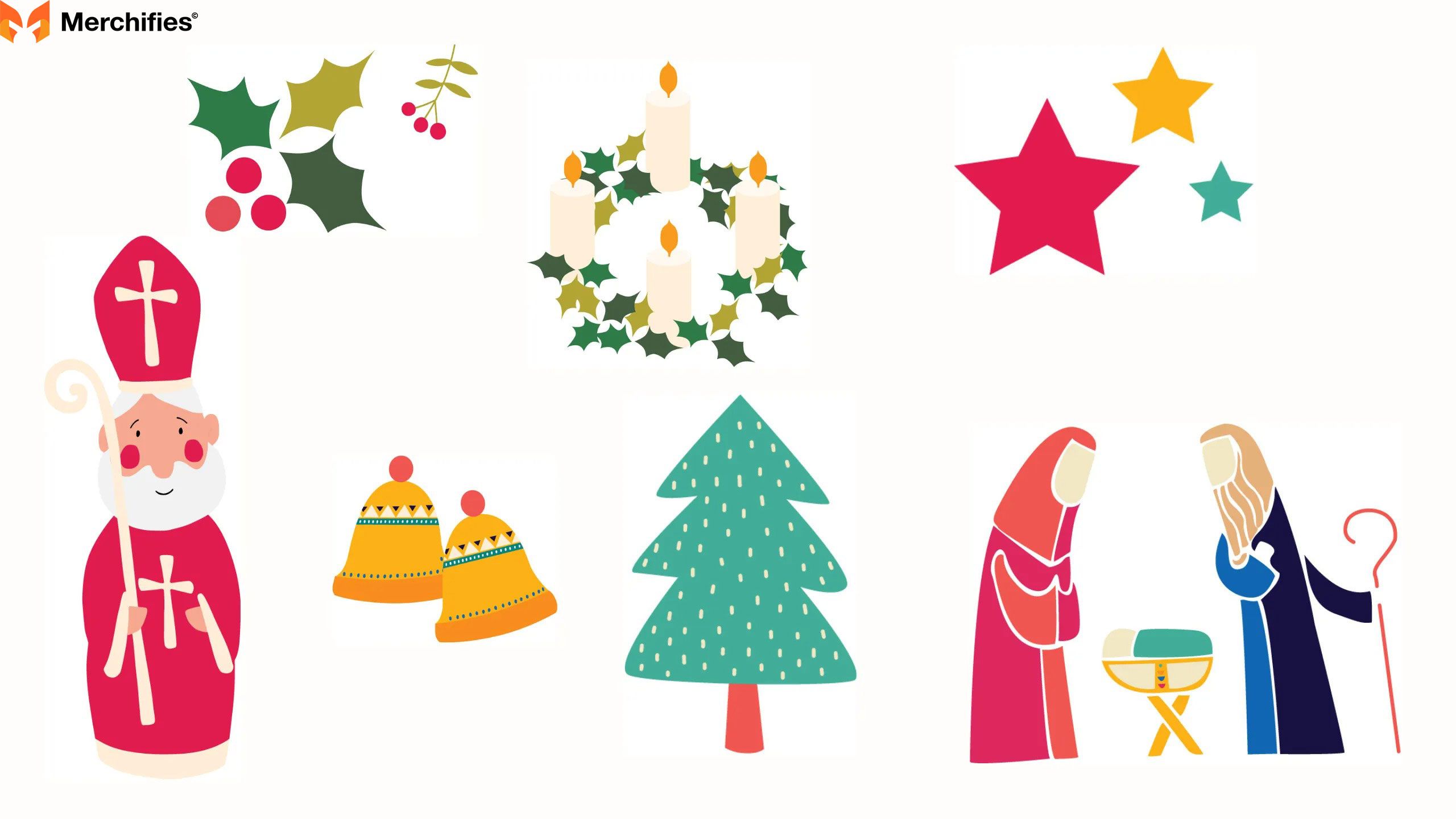
The psychology behind why we choose certain Christmas shirt symbols reveals fascinating insights about human behavior. Psychologists who study clothing choices note that what we wear serves as a "second skin" that projects our identity to the world. When you deliberately put on a Christmas shirt featuring specific symbols, you're making a statement about who you are and what matters to you.
Consider someone wearing a shirt with a prominent nativity scene. They're signaling their religious faith and identifying as part of the Christian community. It's a tribal marker, saying "I belong to this group and share these values." Meanwhile, someone in a shirt covered with cartoon reindeer might be emphasizing playfulness, nostalgia for childhood, or simply their love of cute animals. Neither choice is better or worse—they're just different expressions of identity.
Interestingly, symbol preferences often correlate with personality types. Research in fashion psychology suggests that people drawn to minimalist Christmas shirts with single, simple symbols tend toward introversion and value sophistication. Those who choose maximalist designs packed with multiple symbols often have extroverted personalities and embrace visual abundance. The loud, intentionally "ugly" Christmas sweaters appeal to people with confident, humorous personalities who enjoy breaking social norms and making others laugh.
Age significantly influences Christmas shirt symbol preferences too. Children gravitate toward characters and cute imagery—think Rudolph, Frosty the Snowman, or Santa himself. Teenagers often rebel against overtly cheerful Christmas symbols, preferring edgy or sarcastic designs that establish independence from childhood traditions. Young adults rediscover Christmas enthusiasm through ironic ugly sweater parties. Middle-aged adults tend toward traditional symbols that evoke their own childhood nostalgia. Seniors often prefer classic, timeless designs that reflect decades of Christmas memories.
The symbols we choose also depend heavily on context. You might wear a religious Christmas shirt to church services but opt for a humorous design at an office party. The same person owns both a sophisticated sweater with an elegant snowflake pattern for holiday dinners and a ridiculous shirt with Santa riding a dinosaur for casual gatherings. Context-appropriate symbol selection demonstrates social awareness and flexibility.
Understanding Christmas shirt symbols requires recognizing that meanings aren't fixed—they evolve. A candy cane meant something different to Victorian Christians than it does to modern secular celebrants. Symbols accumulate meanings over time, like layers of paint on a wall. Each generation adds new interpretations while older meanings fade or persist underneath. This living quality makes Christmas graphics endlessly fascinating and personally meaningful in ways that shift as we move through different life stages.
The "Big Three" - Santa, Reindeer, and Snowflakes
Walk into any store selling Christmas shirts in November, and you'll immediately notice three symbols dominating the displays: Santa Claus, reindeer, and snowflakes. These aren't just popular by accident. Together, they represent different facets of Christmas meaning—the historical figure who inspired giving traditions, the magical creatures that enable his journey, and the natural beauty of winter itself. Let's explore each one in depth.
Santa Claus: The Ultimate Christmas Shirt Symbol
Every December, Santa's red-suited figure appears on millions of shirts across America. But this jolly icon has a complex history that few people wearing Santa shirts fully understand. The journey from a 4th-century Turkish bishop to a Coca-Cola advertising character spans continents and centuries.
The real person behind Santa was Nicholas of Myra, born around 280 AD in what's now Turkey. Bishop Nicholas became famous for his generosity, particularly toward children and the poor. One legendary story tells of a poor man with three daughters who couldn't afford their dowries. Nicholas secretly threw bags of gold through their window—or down their chimney, depending on which version you hear—saving the daughters from destitution. This act of anonymous giving became the foundation for Santa's gift-delivering reputation.
When Dutch settlers brought "Sinterklaas" traditions to America, the name evolved into "Santa Claus." But Santa didn't look like our modern image yet. That transformation happened gradually through 19th-century illustrations. Political cartoonist Thomas Nast created detailed drawings of Santa for Harper's Weekly magazine starting in 1863. Nast established Santa's workshop at the North Pole, gave him a book listing naughty and nice children, and dressed him in a red suit trimmed with white fur. These illustrations crystallized Santa's appearance in American imagination.
The final touch came from commercial artist Haddon Sundblom, who painted Santa for Coca-Cola advertisements beginning in 1931. Sundblom's Santa was rosy-cheeked, grandfatherly, and unmistakably jolly—the definitive image we recognize today. Some people claim Coca-Cola "invented" red as Santa's color, but that's not quite accurate. Thomas Nast used red decades earlier. However, Coca-Cola's massive advertising campaign in the 1930s certainly cemented red-suited Santa in global consciousness.
What does Santa symbolize on Christmas shirts today? The meaning varies dramatically depending on who's wearing it and why. For Christians, Santa can represent the spirit of charitable giving inspired by Saint Nicholas's faith-driven generosity. The act of giving gifts anonymously, without expecting recognition, aligns with Jesus's teachings about humble service. In this religious interpretation, Santa shirts remind wearers to embody selfless love.
For secular celebrators, Santa symbolizes the magic of childhood, the joy of giving and receiving, and the festive spirit that unites communities during December. Santa isn't a religious figure in this context but rather a cultural icon representing the best aspects of the holiday season—generosity, joy, family togetherness, and the suspension of cynicism in favor of wonder.
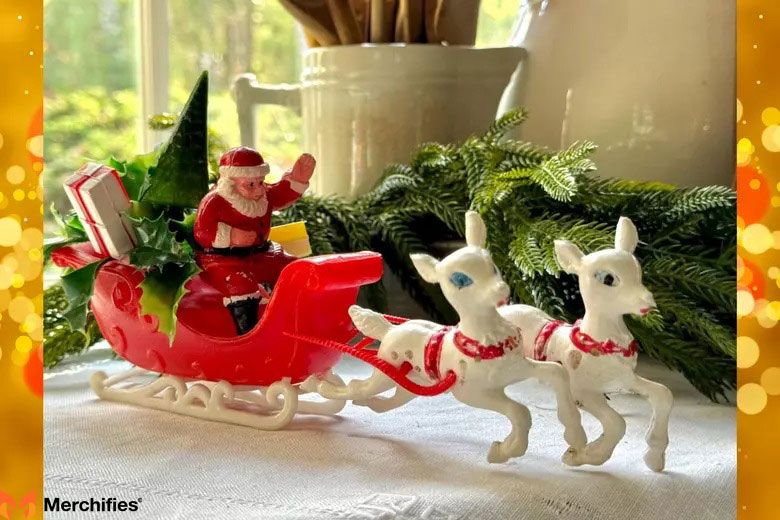
On Christmas shirts, Santa appears in countless variations. Some designs feature his full figure in the classic suit, perhaps loading presents into his sleigh or checking his famous list. These full-body Santa images work well on sweatshirts and hoodies with ample space. Other designs show just Santa's face—either jolly and laughing or winking playfully. Facial close-ups create strong visual impact on t-shirts where space is limited.
Modern Christmas shirt designs also play with Santa's image in creative ways. "Cool Santa" wears sunglasses and rides a skateboard, appealing to people who want festive spirit without traditional sentimentality. Vintage Santa designs use retro illustration styles from the 1940s-60s, tapping into nostalgia for mid-century Christmas aesthetics. Diverse Santa representations show Black, Asian, and Latino versions of the character, acknowledging that Christmas celebration spans all cultures and ethnicities.
The psychology of wearing Santa symbols reveals interesting patterns. Children almost universally love Santa imagery because it connects to the excitement of gifts and the magic of Christmas morning. Parents wearing Santa shirts often do so to create that magic for their kids—the shirt becomes part of the performance of Christmas childhood wonder. Adults without children who choose Santa designs tend to be nostalgic for their own childhood Christmases or genuinely enthusiastic about holiday traditions without irony.
Interestingly, Santa has become so universally recognized that even people celebrating other December holidays or no religious holiday at all often wear Santa shirts. The figure has transcended his Christian origins to become a general symbol of December festivities and winter celebration. That versatility explains why Santa dominates Christmas shirt symbols more than any other single image.
Reindeer: Symbols of Journey and Magic
While Santa delivers presents, reindeer make the journey possible. These elegant creatures with impressive antlers have become inseparable from Christmas imagery, but their path to holiday fame involved pagan myths, poetic creativity, and one very famous red nose.
Reindeer held significance long before Christianity. Nordic and indigenous peoples in Arctic regions revered reindeer as symbols of survival, resourcefulness, and endurance. These animals provided food, clothing, and transportation in harsh climates. Their ability to thrive where other animals couldn't made them seem almost magical. When pagan winter solstice celebrations incorporated reindeer, they symbolized nature's resilience and the promise that life continues even through the darkest, coldest season.
Christianity gradually absorbed these pagan winter traditions, and reindeer came along for the ride. However, reindeer didn't become specifically associated with Santa Claus until 1823, when Clement Clarke Moore wrote the poem "A Visit from St. Nicholas" (better known as "'Twas the Night Before Christmas"). Moore's poem introduced Santa's sleigh pulled by eight reindeer, whom he named: Dasher, Dancer, Prancer, Vixen, Comet, Cupid, Donner, and Blitzen.
These names weren't random. Each reindeer name reflects qualities associated with Christmas spirit. Dasher and Dancer convey energy and celebration. Prancer suggests pride and joy. Vixen adds a mischievous quality. Comet and Cupid connect to celestial wonder and love. Donner and Blitzen are German words for thunder and lightning, emphasizing power and dramatic arrival. Together, the names create a team with diverse personalities united in common purpose—much like families gathering for Christmas.
The most famous reindeer joined the team much later. Rudolph appeared in 1939 when copywriter Robert L. May created him for Montgomery Ward department store's promotional coloring book. May's Rudolph story featured an outcast reindeer whose red nose—initially a source of mockery—became essential when fog threatened to cancel Christmas. Santa needed Rudolph's bright nose to navigate, turning difference into heroic advantage.
Rudolph's story resonated deeply during the Great Depression and World War II era. Americans facing hardship embraced a narrative about an underdog who found purpose despite rejection. Rudolph symbolized hope that everyone has unique value, even if society doesn't initially recognize it. That meaning persists today, making Rudolph especially popular on Christmas shirts for children and anyone who's felt like an outsider.
What do reindeer symbolize on Christmas shirts? At the most basic level, they represent the magic and wonder of Christmas. Flying reindeer defy natural laws—they make the impossible possible. Wearing reindeer imagery signals belief in magic, at least metaphorically. It says you're willing to suspend cynicism and embrace holiday enchantment.
Reindeer also symbolize the journey aspect of Christmas. The holiday involves journeys both literal (traveling to visit family) and metaphorical (spiritual journeys of faith, annual cycles from one Christmas to the next). Reindeer guide these journeys safely, representing the hope that we'll reach our destinations and reunite with loved ones.
On Christmas shirts, reindeer appear in various styles. Cartoon reindeer with big eyes and friendly expressions appeal to children and people embracing cute aesthetics. These designs emphasize reindeer as gentle, magical creatures. Realistic reindeer artwork appeals to nature lovers and those who appreciate wildlife. Silhouette reindeer—often just antlers or a leaping profile—work for minimalist designs and sophisticated holiday fashion.
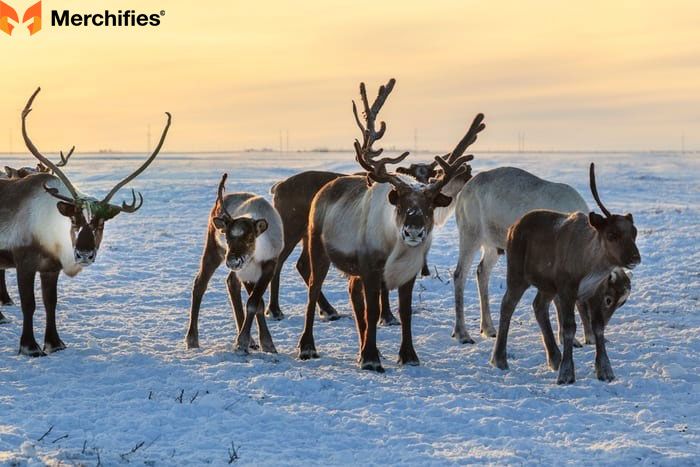
Rudolph specifically dominates reindeer Christmas shirt designs, usually identified by his glowing red nose. Some shirts show just a reindeer face with a prominent red nose. Others depict Rudolph leading Santa's sleigh through the night sky. Humorous designs play with Rudolph themes—like "Red-Nosed Reindeer Pub Crawl" shirts that combine holiday imagery with adult drinking culture.
The psychology of choosing reindeer symbols varies by design type. People selecting cute cartoon reindeer often have warm, nurturing personalities and positive associations with childhood Christmas memories. Those choosing elegant, realistic reindeer tend to value nature, tradition, and sophisticated aesthetics. Rudolph-specific designs appeal to people who identify with underdog stories or want to signal kindness toward those who are different.
Reindeer particularly resonate with children, who love animals and magical narratives. A child wearing a reindeer Christmas shirt often genuinely believes in the creatures' magical abilities to fly. Adults wearing reindeer designs typically tap into nostalgia for that childhood belief, even while intellectually knowing reindeer can't actually fly. The symbol represents the willing suspension of disbelief that makes holidays special.
Interestingly, reindeer symbols work across both religious and secular Christmas celebrations. Unlike nativity scenes or angels, reindeer don't have explicit religious meaning for most modern celebrants. This makes reindeer designs "safe" for diverse settings—equally appropriate at church gatherings, office parties, or family dinners spanning different faith traditions.
Snowflakes: Nature's Perfect Christmas Symbol
Snowflakes might seem like the simplest Christmas shirt symbol—just pretty frozen water crystals. But these delicate ice formations carry surprising symbolic depth, from scientific marvel to religious metaphor to philosophical statements about individuality.
The science of snowflakes fascinates as much as their beauty. Each snowflake forms when water vapor freezes around a dust particle in clouds. As the crystal grows, its six-fold symmetry reflects the molecular structure of water—H₂O molecules bonding in hexagonal patterns. Temperature and humidity variations as the snowflake falls determine its final shape. Since each snowflake experiences a unique path through different atmospheric conditions, no two snowflakes develop identically. This scientific fact has become a metaphor for human individuality.
Vermont farmer Wilson Bentley pioneered snowflake photography in 1885, capturing the first clear images of individual snowflakes under microscopes. His photographs revealed the stunning complexity and variety of snowflake designs—some simple six-pointed stars, others elaborately branched like ferns, still others featuring geometric patterns of astonishing intricacy. Bentley's work transformed how people viewed snowflakes, elevating them from ordinary winter phenomena to recognized natural art.
Religious interpretations of snowflakes developed alongside scientific understanding. Christians noted that snowflakes' six-sided structure could represent the six days of creation described in Genesis. The Bible states that God created the heavens and the earth over six days, resting on the seventh. Snowflakes' consistent hexagonal symmetry seemed to reflect divine design—God's fingerprints visible in frozen water. This interpretation made snowflakes meaningful Christian symbols without explicitly religious imagery, useful for expressing faith subtly.
The purity and whiteness of snow connects to Christian concepts of cleansing and redemption. The Bible verse Isaiah 1:18 states, "Though your sins are like scarlet, they shall be as white as snow." Snow symbolizes spiritual purification and new beginnings. Snowflakes on Christmas shirts can represent this theological concept—the idea that Christ's birth offers humanity a fresh start and moral cleansing.
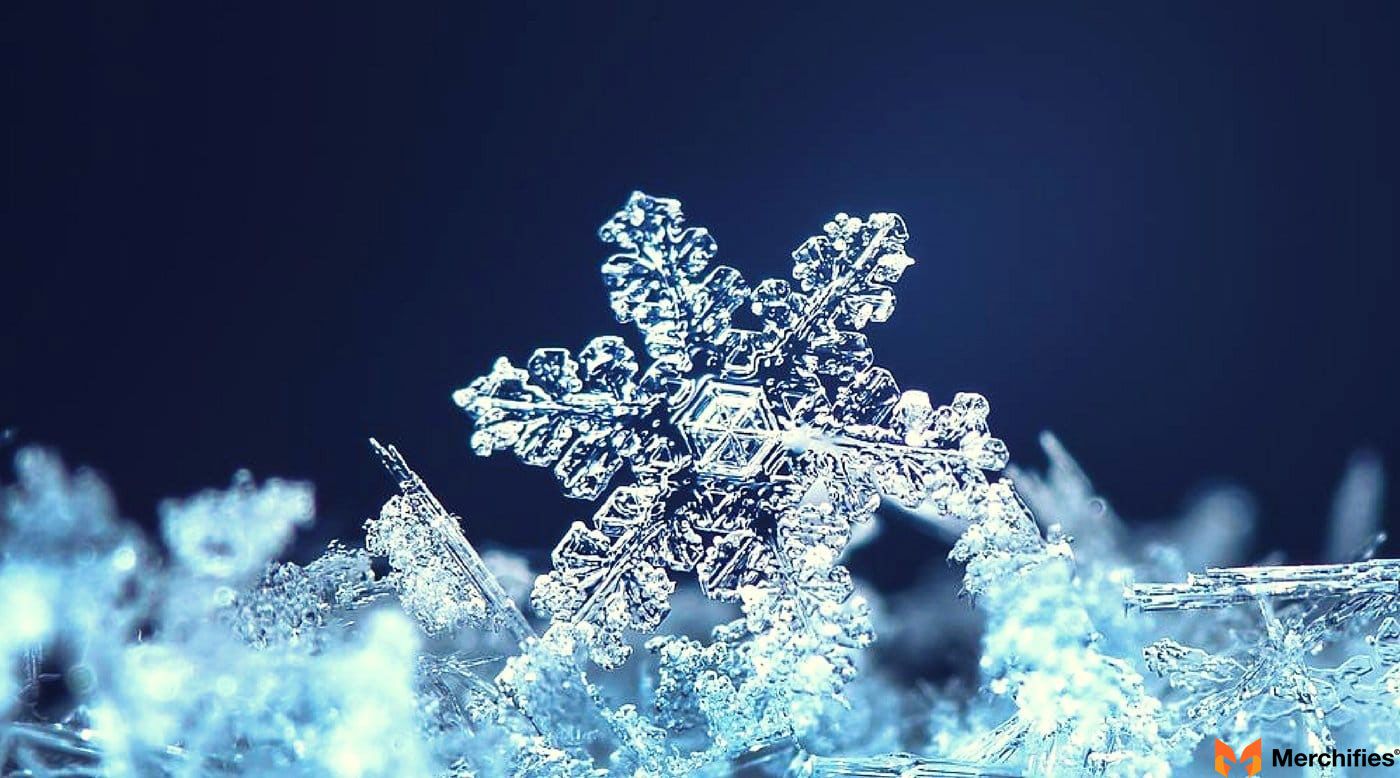
For secular celebrators, snowflakes symbolize winter's beauty and the magic of the season. There's something enchanting about watching snowflakes fall, each unique creation drifting from the sky. Snowflakes represent the wonder that nature creates without human intervention. They're beautiful simply because that's how water freezes—no artist designed them, yet they rival any human artwork in complexity and elegance.
The "no two snowflakes alike" phenomenon has become a powerful metaphor for individuality and diversity. Wearing snowflake Christmas shirts can symbolize celebration of uniqueness—the idea that each person's differences make them valuable. This interpretation resonates particularly with people who feel like outsiders or who champion inclusivity and acceptance of diversity.
On Christmas shirts, snowflakes appear in countless design variations. Geometric snowflake patterns create modern, sophisticated looks. These designs emphasize clean lines, symmetry, and mathematical precision. They appeal to people with minimalist aesthetics who want festive clothing that doesn't sacrifice style. Geometric snowflakes work equally well on t-shirts, sweaters, and button-up shirts, making them versatile Christmas shirt symbols.
Realistic snowflake designs replicate actual snow crystal photographs, often using white, silver, or light blue colors against darker backgrounds. These designs appeal to nature lovers and people who appreciate scientific accuracy. They communicate that the wearer values natural beauty and finds wonder in the physical world.
Stylized, playful snowflakes feature in more whimsical Christmas shirt designs. These might have faces, irregular patterns, or be combined with other symbols like Santa or reindeer. Stylized snowflakes appeal to children and adults who embrace fun over sophistication.
All-over snowflake patterns create winter wonderland effects, with dozens of snowflakes scattered across the entire shirt. These designs communicate full immersion in Christmas spirit—the wearer isn't making subtle nods to the holiday but rather embracing it completely. All-over patterns work especially well on pajamas and casual sweatshirts.
The color psychology of snowflake designs matters significantly. White snowflakes on dark backgrounds create high contrast that's visually striking and emphasizes winter's darkness punctuated by snow's brightness. Silver or iridescent snowflakes add sophistication and glamour, transforming a casual Christmas shirt into something dressier. Light blue snowflakes suggest coldness and winter chill. Multi-colored snowflakes appeal to children and people who reject traditional Christmas color schemes.
The psychology behind choosing snowflake Christmas shirt symbols reveals interesting patterns. People selecting snowflake designs tend to appreciate elegance, symmetry, and natural beauty. They often have analytical minds that appreciate the mathematical precision of snowflake geometry. Many snowflake-design wearers also value individuality and resist conformity—they choose snowflakes partly because they're less obviously "Christmas-y" than Santa or reindeer, making them feel less cliché.
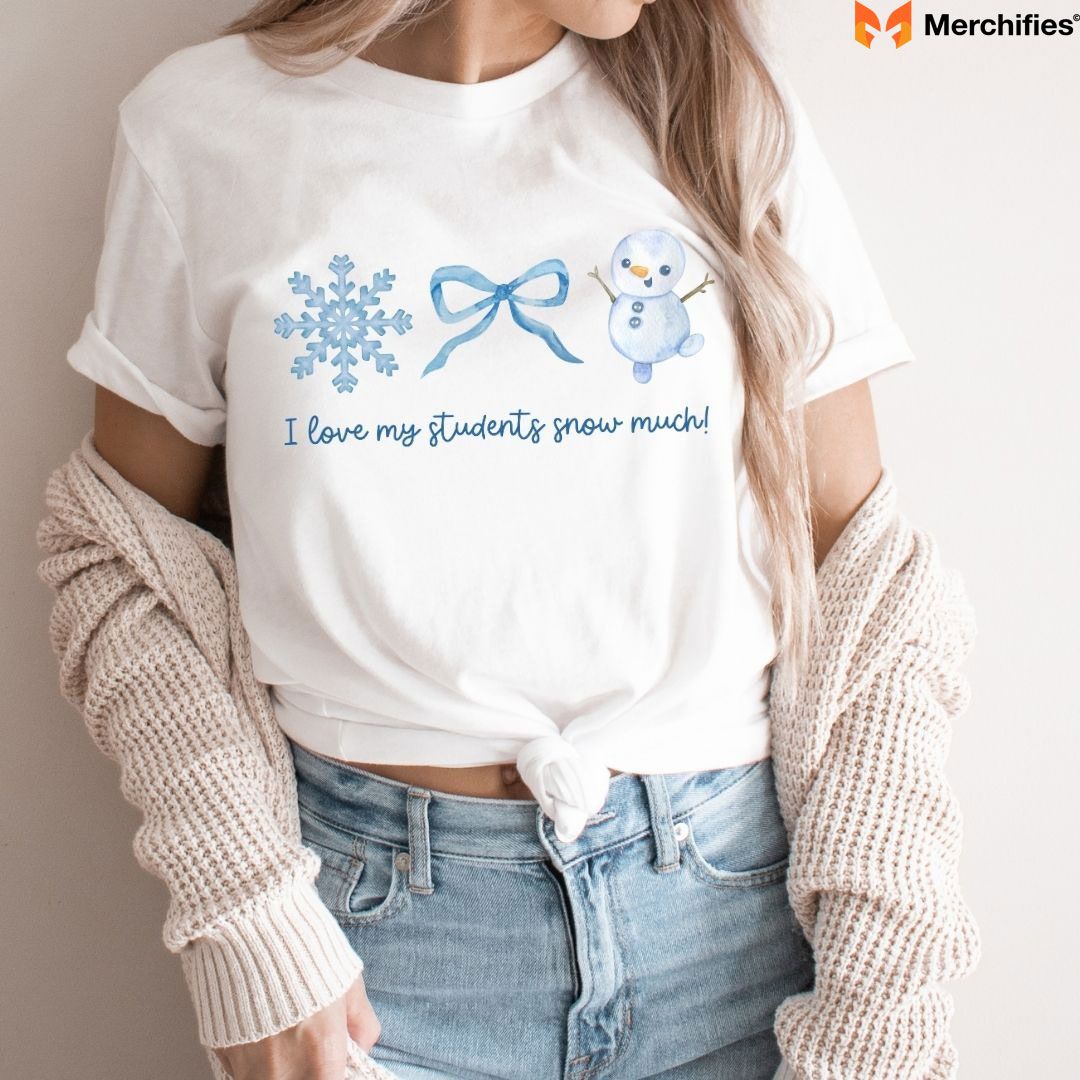
Snowflakes have another psychological advantage: they're completely neutral regarding religious belief. Unlike angels or nativity scenes, snowflakes don't signal Christian faith. Unlike Santa, they don't connect to any specific cultural tradition. Snowflakes are just nature—frozen water crystals that appear everywhere winter brings cold temperatures. This neutrality makes snowflake Christmas shirts perfect for diverse workplaces, interfaith families, and anyone who wants to participate in December celebrations without declaring religious affiliation.
Interestingly, snowflakes have maintained their Christmas shirt symbol status even as they've taken on political connotations. The term "snowflake" became a political insult implying fragility and oversensitivity. Yet this hasn't diminished snowflakes' popularity on Christmas shirts, perhaps because context matters—a geometric snowflake pattern on a Christmas sweater clearly references winter and holidays, not politics. The visual symbol maintains its traditional meaning despite linguistic shifts.
Together, Santa, reindeer, and snowflakes form the trinity of Christmas shirt symbols. They balance human tradition (Santa), magical narrative (reindeer), and natural phenomenon (snowflakes). A shirt featuring all three covers multiple bases—tradition, magic, and beauty. This explains why combination designs pairing Santa with reindeer against snowflake backgrounds remain perennially popular. They offer something for everyone, appealing to diverse preferences while creating a cohesive Christmas aesthetic.
Religious Christmas Shirt Symbols
For millions of Christians, Christmas isn't primarily about Santa or decorations—it's about celebrating Jesus Christ's birth. Religious Christmas shirt symbols allow believers to express their faith publicly while participating in holiday festivities. These symbols carry deep theological meaning that transforms Christmas from a secular party into a spiritual celebration.
Star of Bethlehem
The Christmas star shines as one of Christianity's most recognizable symbols, appearing on trees, ornaments, and countless Christmas shirts. According to the Gospel of Matthew, a brilliant star appeared in the sky when Jesus was born, guiding three wise men (Magi) from the East to Bethlehem. These scholars had studied ancient prophecies predicting a great king's birth. When they saw the star, they knew the prophecy was fulfilled and traveled to honor the newborn messiah.
The star's theological significance extends beyond simple navigation. In Christian interpretation, the Star of Bethlehem represents God's guidance and revelation—how divine truth illuminates the path for those seeking it. The star made Christ's birth visible to Gentiles (non-Jews), symbolizing that Jesus came for all humanity, not just one nation. On Christmas shirts, stars communicate this universal message of hope, guidance, and divine light piercing darkness.
Interestingly, scientists and theologians have debated what astronomical phenomenon the Star of Bethlehem might have been. Some suggest a comet. Others propose a supernova—an exploding star that briefly shines with extraordinary brightness. The most compelling scientific theory suggests a conjunction of Jupiter and Saturn, which occurred around the time scholars estimate Jesus's birth. When these planets aligned, they appeared as an unusually bright "star" to naked-eye observers. Such conjunctions are rare, happening every few hundred years, which would explain why the Magi considered it significant.
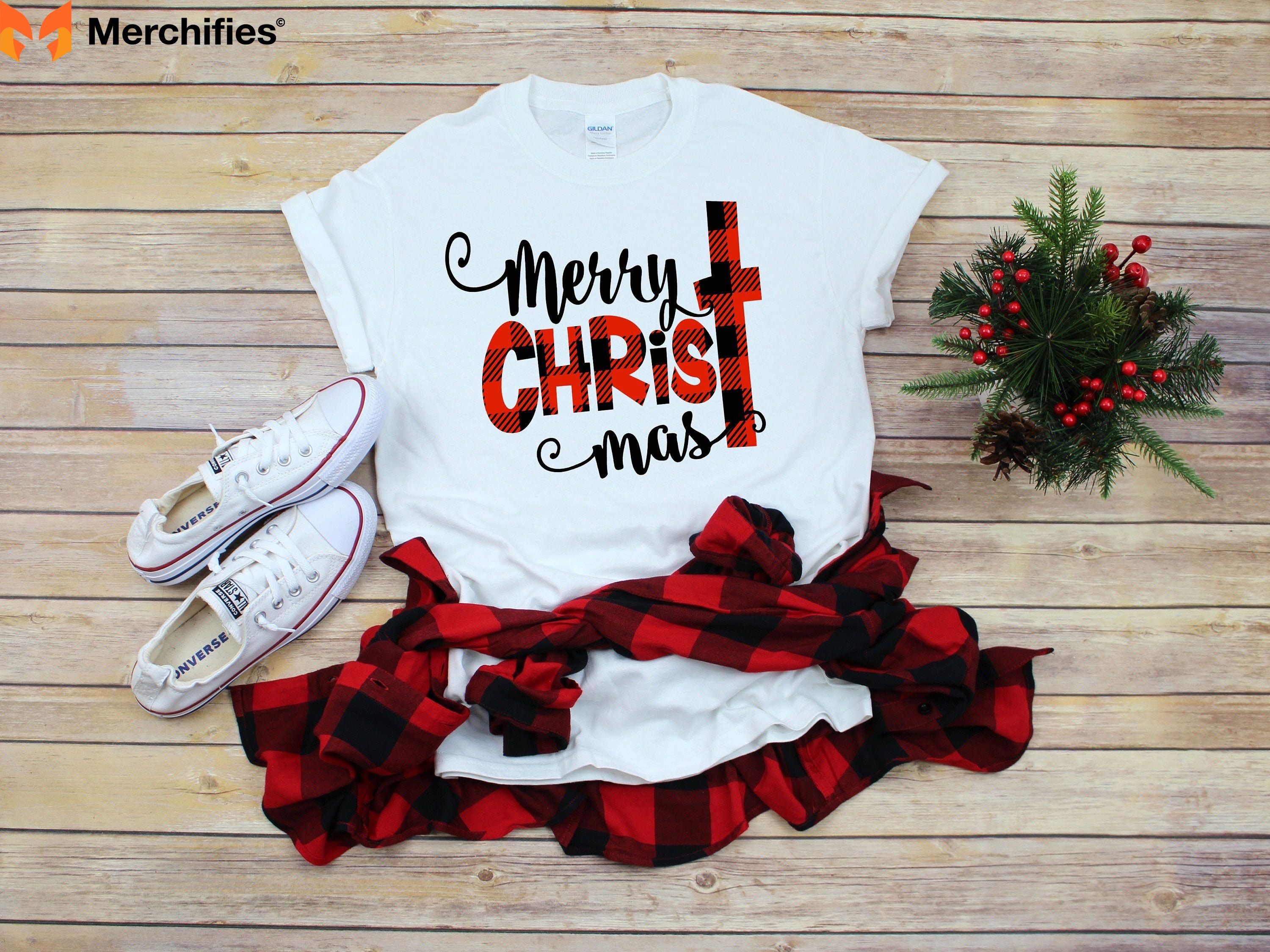
On Christmas shirts, stars appear in various styles. Simple five-pointed stars reference both the Star of Bethlehem and the stars we place atop Christmas trees. Eight-pointed stars with longer alternating points more closely resemble historical Star of Bethlehem depictions. Some religious Christmas shirts show the star shining over a silhouette of Bethlehem, combining multiple symbols into cohesive imagery. Others pair stars with wise men following its light, telling the complete biblical story.
Stars also appear in more subtle religious Christmas shirt designs. A small star on a shirt's corner or chest can signal Christian faith without overwhelming the design. This appeals to believers who want to express their faith but prefer understated fashion. Conversely, large, prominent stars declare faith boldly—these designs appeal to evangelical Christians comfortable with public religious expression.
The versatility of star symbols makes them useful for both religious and secular Christmas celebrations. Someone viewing a star on a Christmas shirt might interpret it religiously (Star of Bethlehem) or secularly (winter night sky, Christmas tree topper). This dual meaning allows stars to function in diverse social contexts without causing awkwardness or offense.
Angels
Angels play crucial roles in Christianity's Christmas narrative, making them meaningful Christmas shirt symbols for believers. The Gospel of Luke describes how the angel Gabriel appeared to Mary, announcing she would bear God's son. Mary, a virgin, initially feared and questioned this news. Gabriel explained that the Holy Spirit would cause the conception—Jesus would be both fully human and fully divine.
Angels also appeared to Jesus's earthly father, Joseph. When Joseph discovered Mary's pregnancy, he planned to quietly break their engagement to spare her public shame. But an angel visited Joseph in a dream, instructing him to proceed with marriage because Mary's child was conceived through divine intervention. Angels thus facilitated Jesus's birth by preparing both parents to accept their extraordinary roles.
The most famous angel appearance occurred in fields outside Bethlehem on the night Jesus was born. Angels appeared to shepherds watching their flocks, announcing the messiah's birth. Luke's Gospel records the angel saying, "I bring you good news that will cause great joy for all the people. Today in the town of David a Savior has been born to you; he is the Messiah, the Lord." Then a multitude of angels appeared, praising God. The shepherds hurried to Bethlehem, becoming the first non-family witnesses to Jesus's birth.
On Christmas shirts, angels symbolize divine communication and heavenly joy surrounding Christ's birth. They represent the connection between heaven and earth—spiritual realities breaking through into human experience. For Christians wearing angel Christmas shirts, these symbols affirm belief that God actively engages with humanity and that spiritual beings exist beyond our physical perception.
Angel designs on Christmas shirts vary dramatically in style and interpretation. Classical angels appear as beautiful humans with large, feathered wings, often wearing flowing white robes. These designs draw from Renaissance and medieval religious art, presenting angels as majestic, awe-inspiring beings. Such representations appeal to Christians who appreciate traditional religious imagery and formal theological aesthetics.
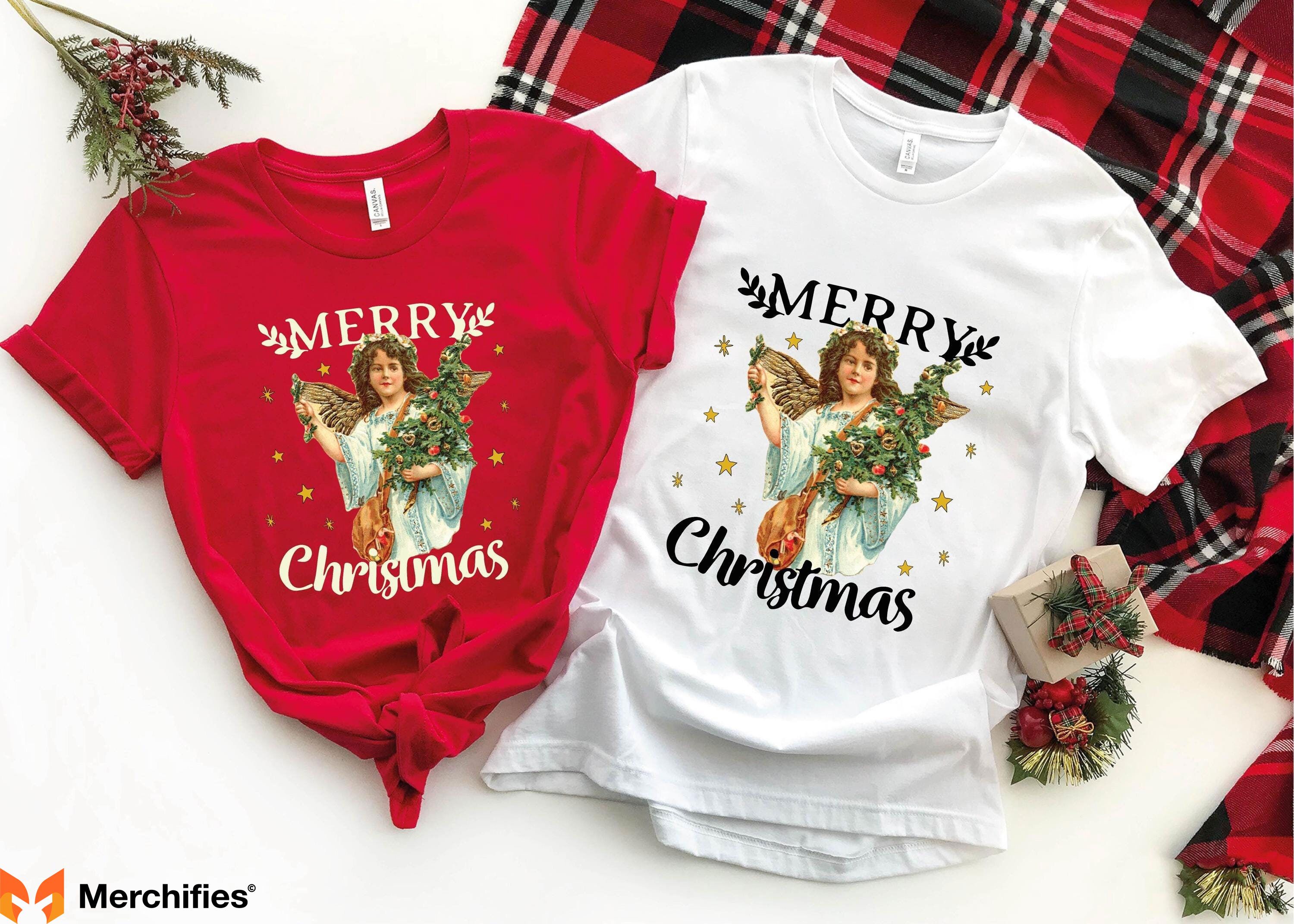
Cherubic angels—chubby-cheeked baby angels—appear frequently on Christmas shirts, especially for children. These cute, innocent-looking angels emphasize purity, joy, and the childlike wonder of Christmas. While cherubs aren't biblically accurate (Bible angels are described as powerful, sometimes frightening beings), they've become popular cultural shorthand for angelic presence. Cherub designs appeal to parents wanting adorable Christmas outfits for young children.
Some Christmas shirts show angels playing musical instruments like trumpets, harps, or horns. These designs reference both the angels' announcement to shepherds and the broader Christian association between angels and heavenly music. Music-playing angels symbolize worship, celebration, and the harmony of creation praising God.
Wings-only designs have become popular on modern Christmas shirts. Rather than showing full angel figures, these designs feature just a pair of wings, suggesting angelic presence without explicit religiosity. Wings can be read secularly (as simply beautiful, symmetrical designs) or religiously (as angel symbols). This ambiguity makes wing designs versatile for diverse contexts.
The psychology of wearing angel Christmas shirt symbols connects to specific faith expressions and personality types. People selecting angel designs tend to have strong Christian identities and appreciate supernatural elements of their faith. They're comfortable expressing belief in spiritual realities beyond material existence. Angel wearers often have tender, compassionate personalities aligned with angels' traditional roles as divine messengers of comfort and protection.
Nativity Scenes
The nativity scene—baby Jesus lying in a manger with Mary and Joseph nearby—is Christianity's central Christmas image. This symbol directly depicts the event Christians celebrate, making nativity Christmas shirts unambiguous faith declarations. Unlike stars or angels that carry multiple meanings, nativity scenes leave no doubt about the wearer's Christian belief and emphasis on Christmas's religious significance.
Traditional nativity depictions include several elements. Baby Jesus lies in a manger (animal feeding trough) because the inn had no room for Mary and Joseph. Mary kneels beside the manger, often shown contemplating the miracle of her divine son. Joseph stands protectively nearby, taking his role as earthly father seriously despite knowing Jesus was conceived through the Holy Spirit. Shepherds who heard angels' announcement often appear, representing how God revealed Christ first to humble, working people rather than royalty or religious leaders.
The three wise men (Magi) appear in some nativity scenes, though historically they arrived months or years after Jesus's birth. Their inclusion represents Jesus's significance extending beyond Judaism to the wider world—these were wealthy scholars from distant lands, possibly Persia or Arabia, yet they recognized and worshiped the Jewish messiah. The gifts they brought—gold, frankincense, and myrrh—carry symbolic meanings. Gold represented royalty, frankincense symbolized divinity (it was burned in religious ceremonies), and myrrh foreshadowed death (it was used in burial preparations).
Animals commonly appear in nativity Christmas shirt designs. While the Bible doesn't explicitly mention animals at Jesus's birth, tradition places oxen, donkeys, and sheep near the manger since it was in a stable or cave used for sheltering livestock. These animals represent all creation bearing witness to God entering the world as a human infant. They also emphasize the humble circumstances of Christ's birth—the King of Kings born among farm animals rather than in a palace.
On Christmas shirts, nativity scenes appear in various artistic styles. Realistic, detailed artwork shows the scene as if photographed, with careful attention to historical accuracy regarding clothing, architecture, and setting. These designs appeal to Christians who value biblical scholarship and historical authenticity. They create beautiful, artistically serious Christmas shirts suitable for church services and formal holiday events.
Silhouette nativity designs show the scene's basic shapes—Mary, Joseph, baby Jesus, perhaps shepherds and animals—as black cutouts against lighter backgrounds. Silhouette designs create elegant, sophisticated Christmas shirts that communicate religious meaning without visual complexity. They work well on both casual t-shirts and dressier sweaters, making them versatile for various occasions.
Stained glass style nativity designs mimic the look of church windows, with bold black lines separating colored sections. These designs connect to centuries of Christian artistic tradition and create visually striking Christmas shirts. The stained glass aesthetic elevates the nativity scene to something special—not just an illustration but rather sacred art worthy of church decoration.
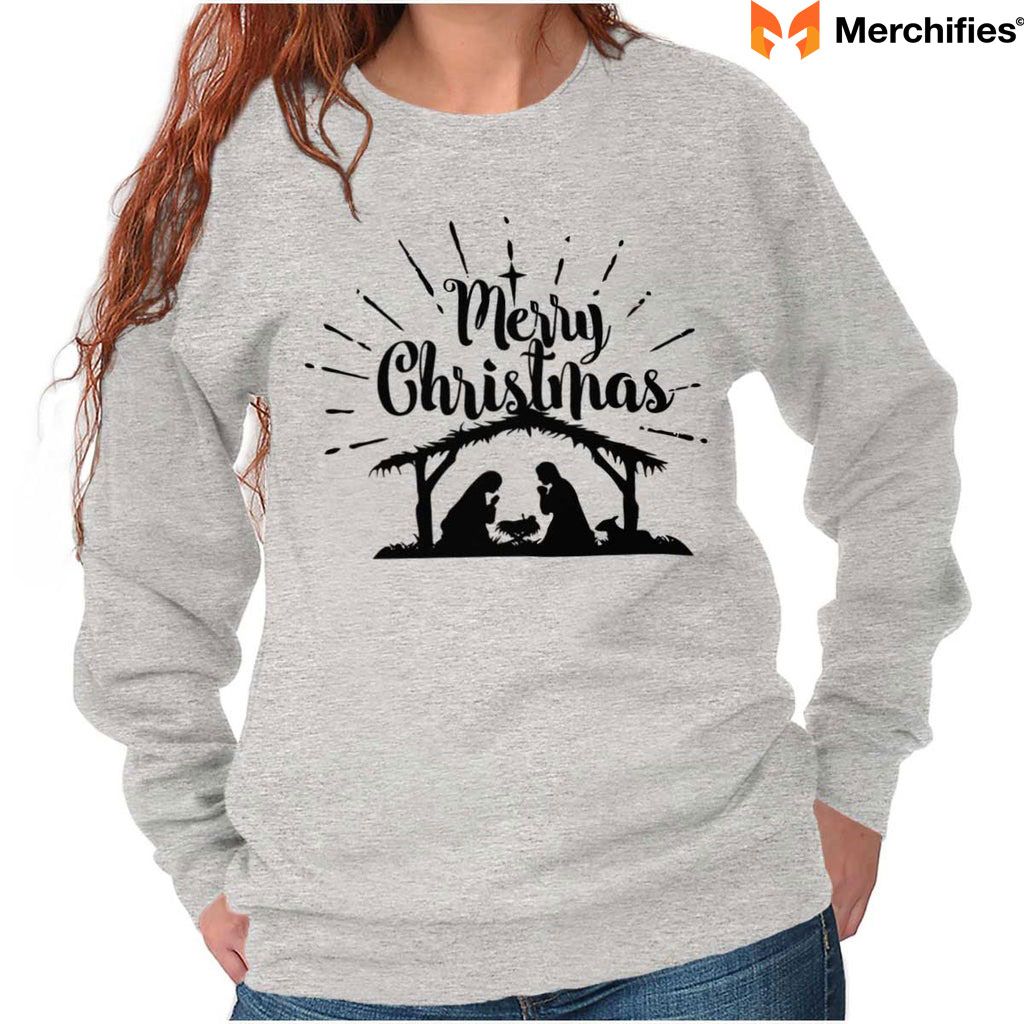
Cartoon or cute-style nativity scenes appear on children's Christmas shirts and appeal to adults who prefer cheerful, simplified religious imagery. These designs might show Mary, Joseph, and baby Jesus with friendly, rounded features and bright colors. While less historically accurate, cartoon nativity scenes make the Christmas story accessible to young children just learning about their faith.
The decision to wear nativity Christmas shirt symbols reflects significant religious commitment. These aren't symbols that can be read multiple ways—they're explicitly Christian. People wearing nativity designs are comfortable publicly declaring their faith and making Christmas's religious significance primary over its secular, commercial aspects. This appeals to evangelical Christians, Catholics who emphasize Jesus's birth during Advent and Christmas, and others for whom faith identity outweighs social conformity.
Nativity Christmas shirts sometimes face challenges in increasingly secular, diverse workplaces and social settings. While Santa and snowflakes offend no one, overtly religious symbols can create discomfort in mixed-faith environments. Some Christians view this as precisely why nativity shirts matter—they provide opportunities to share faith and resist Christmas's secularization. Others prefer more subtle Christian symbols to avoid appearing preachy or making non-Christians uncomfortable. This tension shapes how and when people wear nativity Christmas shirts, with many reserving them for church services, Christian gatherings, and family events rather than wearing them in all December contexts.
Crosses and Religious Text
Some Christmas shirts incorporate cross symbols—Christianity's most universal icon—into holiday designs. The cross represents Jesus's crucifixion and resurrection, the core events of Christian faith. While crosses are associated more with Easter than Christmas, their inclusion in Christmas designs connects Christ's birth to his ultimate purpose. Christian theology teaches that Jesus was born specifically to eventually die for humanity's sins and conquer death through resurrection. Christmas shirts featuring crosses acknowledge this complete narrative rather than viewing Jesus's birth in isolation.
Religious text appears on many Christian Christmas shirts, often in elegant calligraphy or bold, declarative fonts. Common phrases include "Jesus is the reason for the season," "Immanuel" (meaning "God with us"), "Unto us a child is born," and various Bible verses related to Christ's birth. These text-based designs appeal to Christians who want their shirts to explicitly state Christmas's meaning rather than relying on symbolic imagery alone.
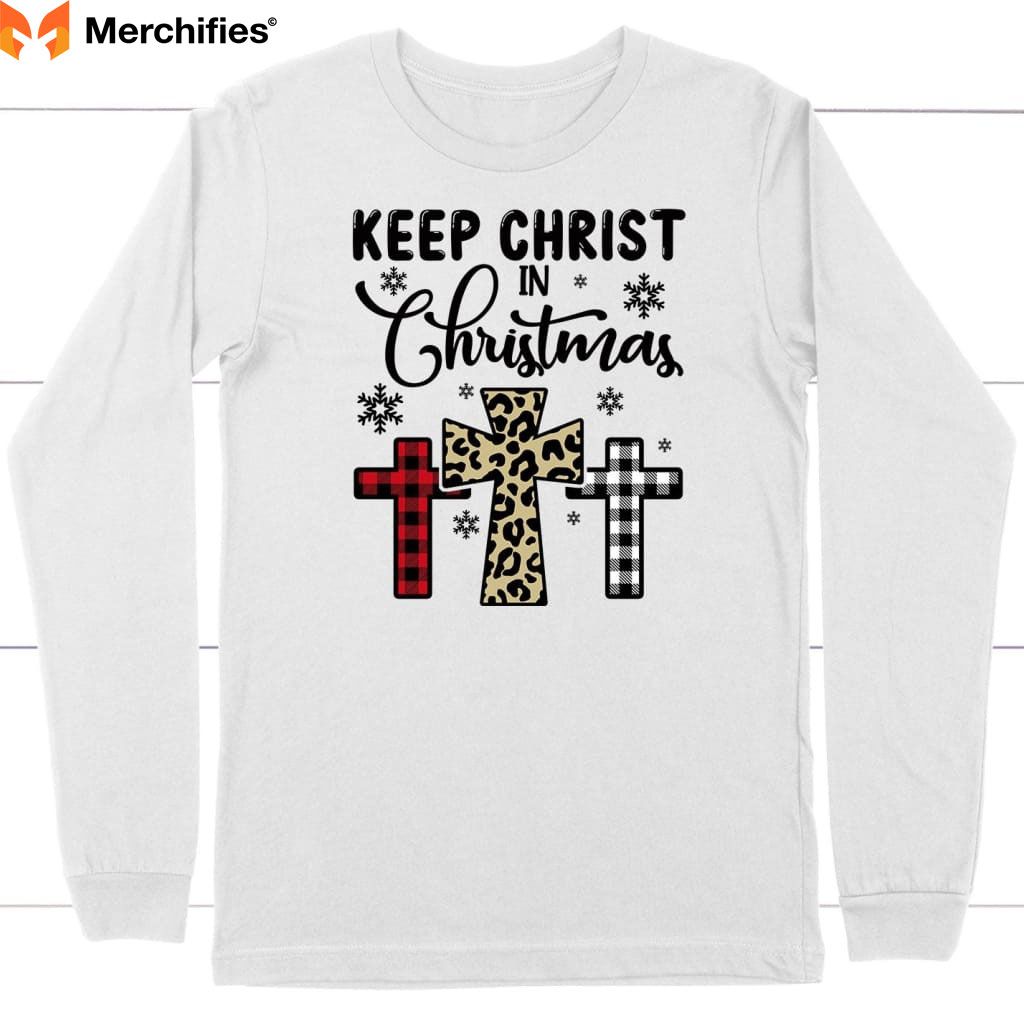
"Jesus is the reason for the season" has become the most popular religious Christmas shirt phrase. It directly counters Christmas's commercialization and secularization, reminding wearers and viewers that the holiday celebrates Christ's birth, not shopping and parties. This phrase appeals to Christians frustrated by how modern culture has stripped religious meaning from Christmas, turning it into a generic "winter holiday" focused on presents and decorations.
The psychology behind wearing text-based religious Christmas shirts differs from wearing symbolic imagery. Text makes no room for interpretation—the message is explicit and declarative. People choosing these designs tend toward evangelical faith expressions, prioritizing witnessing and public faith declaration. They're often comfortable with confrontation or disagreement their shirts might provoke, viewing it as an opportunity to discuss their beliefs.
Religious text Christmas shirts work particularly well in Christian community contexts—church services, Christian school events, church-organized activities. In these settings, the shirts reinforce shared values and create a sense of unified identity. Wearing matching or similar religious text shirts to Christian events demonstrates solidarity and commitment to keeping Christ central to Christmas celebrations.
Candy Canes' Religious Meaning
Most people eating candy canes think only about peppermint flavor and sweet treats. But this striped confection carries Christian symbolism that transforms it from simple candy into a religious teaching tool. According to tradition, candy canes were created by a German choirmaster in 1670 who wanted to keep children quiet during long Christmas services. He asked a local candy maker to create sweet sticks bent into shepherds' crook shapes.
The J-shape of candy canes holds multiple meanings. Most obviously, it resembles a shepherd's staff, connecting to the shepherds who visited baby Jesus. More significantly, the J can represent Jesus's name. White coloring symbolizes Christ's purity and sinless life. Red stripes represent Jesus's blood shed during crucifixion. Some interpretations note that if you turn a candy cane upside down, the J becomes a staff that can symbolize Jesus as the "Good Shepherd" who guides and protects his followers.
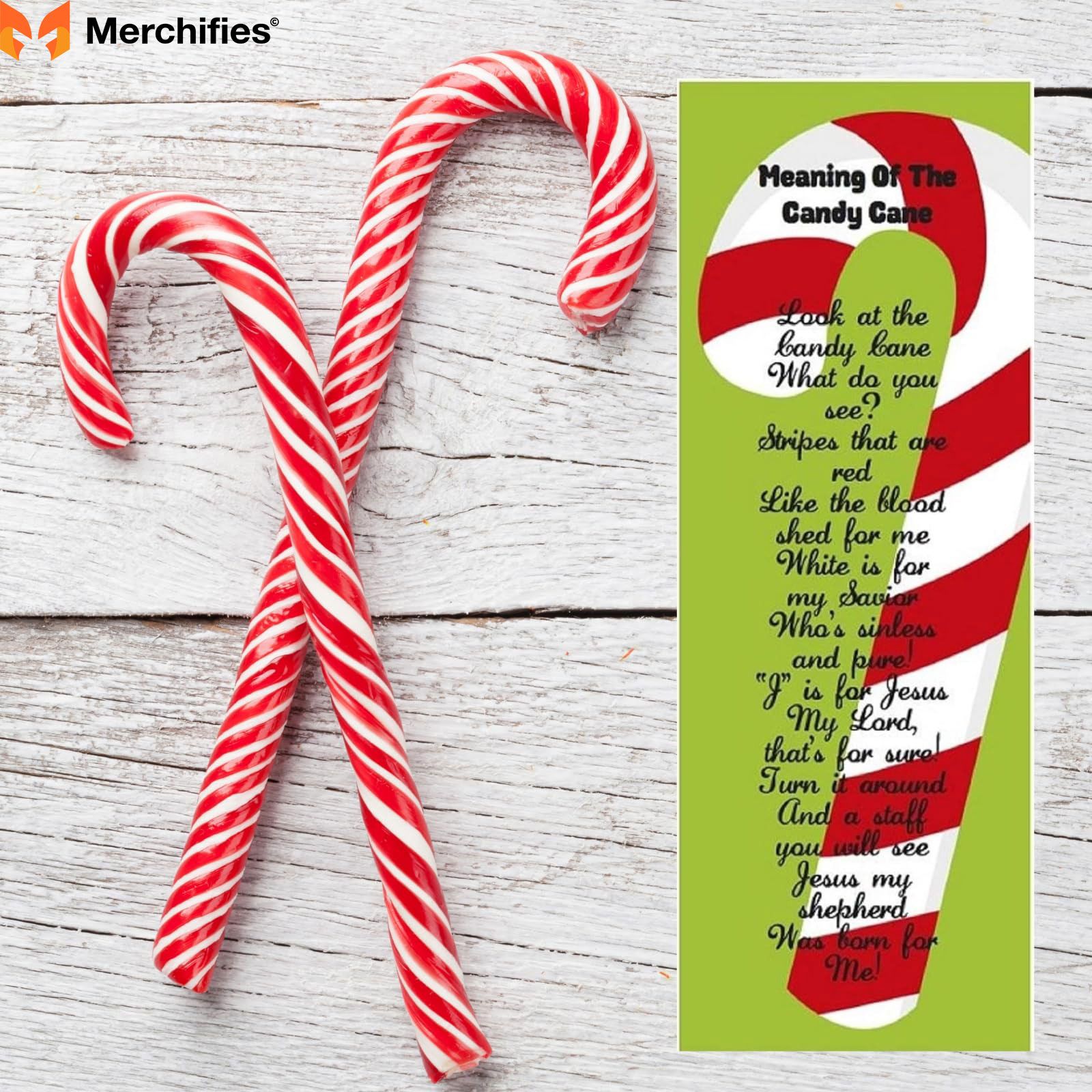
Whether this religious origin story is historically accurate remains debated. Some historians suggest candy canes developed more gradually without explicit Christian symbolism, with religious meanings attached retroactively. Regardless of historical truth, many Christians embrace and teach these interpretations, making candy canes meaningful religious symbols for believers.
On Christmas shirts, candy canes appear in countless designs. Realistic candy cane imagery shows the familiar red-and-white stripes in curved J-shape. These designs work for both religious and secular wearers, since candy canes have become secular Christmas symbols regardless of their possible Christian origins. Other designs incorporate candy canes into larger compositions—perhaps crossed behind other symbols or arranged into wreaths or borders.
Some Christmas shirts explicitly connect candy canes to Christian meaning through accompanying text that explains the religious symbolism. These educational designs appeal to parents teaching children about faith and to Christians who want their Christmas shirts to carry religious significance beyond surface decoration.
Doves: Peace and the Holy Spirit
Doves appear less frequently on Christmas shirts than angels or nativity scenes, but they carry important Christian symbolism. In Christian tradition, doves represent the Holy Spirit, peace, purity, and divine presence. Though doves don't appear in Christmas nativity narratives, they connect to Christ's life—most notably when the Holy Spirit descended "like a dove" during Jesus's baptism.
On Christmas shirts, doves often appear carrying olive branches, combining Christian and broader cultural peace symbolism. These designs emphasize Christmas as a season of "peace on earth," referencing the angels' announcement to shepherds. Dove designs appeal to Christians emphasizing Jesus's role as "Prince of Peace" and to anyone associating Christmas with harmony, reconciliation, and goodwill.
White doves on Christmas shirts create elegant, sophisticated designs that communicate religious meaning subtly. Unlike nativity scenes that explicitly depict Jesus's birth, doves suggest Christian faith through symbol without narrative illustration. This appeals to believers who want faith-aligned Christmas fashion that doesn't appear overtly religious or preachy.

Religious Christmas shirt symbols serve multiple purposes for believers. They provide opportunities to express faith publicly during a season when Christianity's role in American culture becomes especially visible and sometimes contested. They educate others—particularly children—about Christmas's religious significance. They create solidarity among Christians, signaling shared values and beliefs. And they remind wearers themselves about their faith commitments amid December's commercial chaos, keeping spiritual focus despite materialistic cultural pressures.
The choice between religious and secular Christmas shirt symbols reveals much about personal faith, cultural navigation, and social context awareness. Neither choice is inherently better—they simply reflect different priorities, beliefs, and comfort levels with public religious expression. Understanding religious Christmas shirt symbols' meanings helps everyone interpret the visual language worn by millions each December.
Traditional Christmas Shirt Symbols
Beyond explicitly religious imagery, numerous traditional Christmas shirt symbols have evolved over centuries, blending pagan origins, Christian adaptation, cultural evolution, and commercial innovation into the Christmas iconography we recognize today.
Christmas Trees
Christmas trees dominate holiday decorations in homes, stores, and public spaces, making them natural candidates for Christmas shirt symbols. But why do we bring evergreen trees indoors, decorate them with lights and ornaments, and display them prominently? The tradition combines ancient pagan practices with Christian symbolism, creating meaning layers that have accumulated over millennia.
Ancient peoples noticed that evergreen trees—fir, spruce, pine—remained green and alive throughout winter while deciduous trees appeared dead. This resilience suggested magical properties. Pagans celebrating winter solstice displayed evergreen branches in their homes as reminders that spring and life would return despite winter's death-like grip. The trees symbolized hope, endurance, and nature's cycle of renewal.
Early Christians adapted this pagan tradition, giving it Christian meaning. Evergreens' continued life through winter came to represent eternal life through Jesus Christ. Christians believe that faith in Christ grants believers immortality—souls living forever despite physical death. Evergreen trees became symbols of this promise.
The triangular shape of conifer trees offered additional Christian symbolism. The tree's three-pointed form was interpreted as representing the Holy Trinity—God the Father, God the Son (Jesus), and God the Holy Spirit. This made Christmas trees theological teaching tools, their very shape communicating core Christian doctrine.
Christmas trees as indoor holiday decorations became popular in Germany during the 16th century. Martin Luther, the Protestant Reformation leader, allegedly brought the first decorated tree indoors after being inspired by stars twinkling through forest trees on a winter night. He recreated the effect by adding candles to a tree in his home. Whether this story is historically accurate or legend, Germans embraced indoor Christmas trees, decorating them with candles, fruits, nuts, and paper ornaments.
The tradition spread to England when Queen Victoria married German Prince Albert. Prince Albert set up elaborate Christmas trees in Windsor Castle, and newspapers published illustrations of the royal family gathered around their decorated tree. This made Christmas trees fashionable among English aristocracy, and the practice quickly spread to middle-class families and eventually to America, where German immigrants had already begun establishing the tradition.
On Christmas shirts, tree designs vary dramatically in style and complexity. Full, realistic trees with detailed branches, ornaments, and lights appear on Christmas sweaters and hoodies where space allows complex imagery. These designs appeal to people who love traditional Christmas aesthetics and detailed artwork.
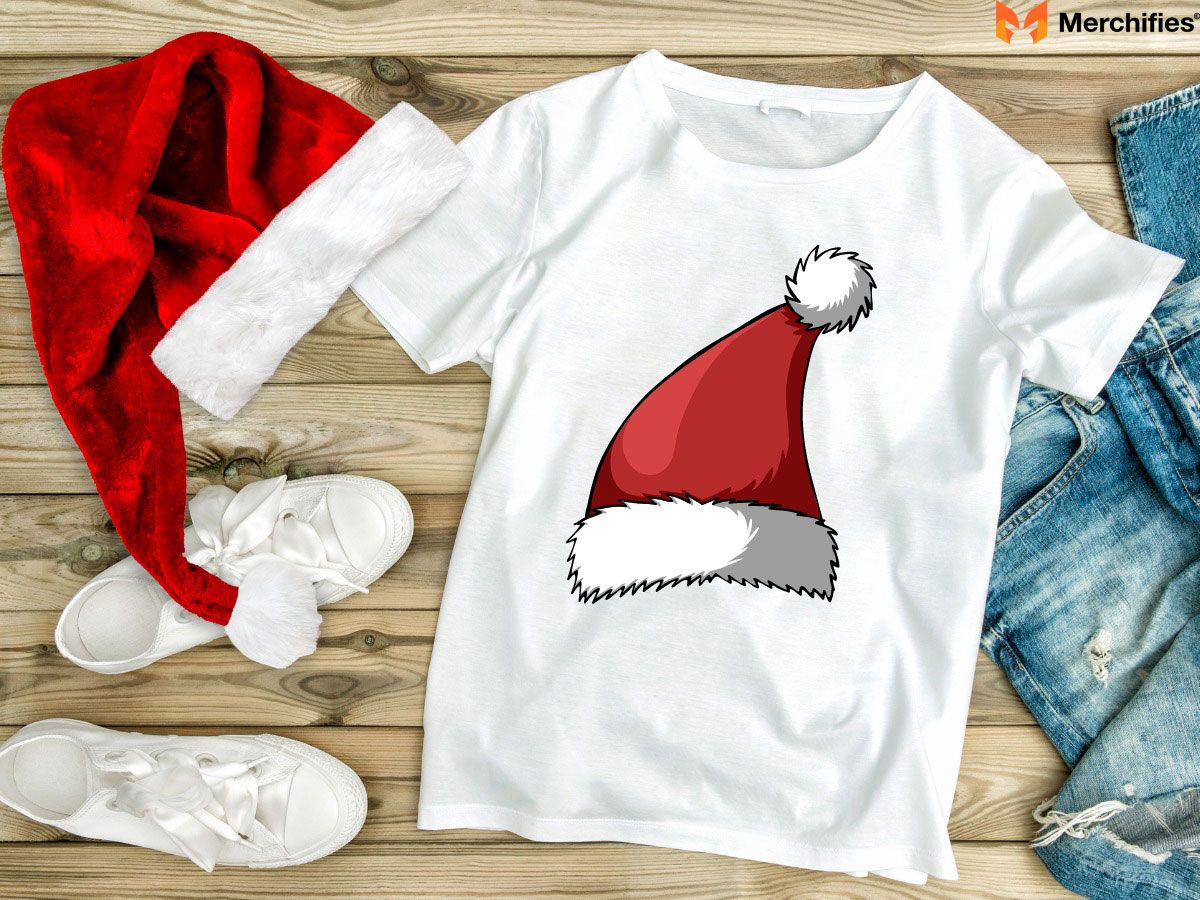
Simplified, stylized tree silhouettes work better on t-shirts and create clean, modern Christmas shirt designs. These might show just a tree outline, perhaps with a star on top, creating recognizable Christmas symbolism without visual clutter. Minimalist tree designs appeal to people who want festive clothing that maintains sophisticated style.
Geometric Christmas tree designs use triangles or stacked shapes to suggest trees abstractly. These modern interpretations appeal to people who appreciate contemporary art and want Christmas shirts that feel fresh rather than traditional. Geometric trees can be surprisingly striking, using bold colors and angular forms to create visual impact.
Upside-down Christmas tree designs have become trendy on humorous Christmas shirts. These playful inversions suggest chaos, rebellion against tradition, or the overwhelming stress some people experience during holidays. Upside-down trees appeal to people with ironic sensibilities who enjoy subverting expected Christmas imagery.
Tree patterns featuring multiple small trees scattered across a shirt create all-over designs that immerse the wearer in Christmas forest imagery. These work particularly well on pajamas and casual loungewear, creating cozy, festive feelings perfect for December evenings at home.
The psychology of wearing Christmas tree symbols connects to several meanings. Trees represent tradition and family—many families have cherished ornament collections accumulated over generations. Wearing tree shirts can express appreciation for these traditions and memories. Trees also symbolize the natural world and winter beauty, appealing to nature lovers. For Christians, trees carry religious significance about eternal life and the Trinity. Even for secular celebrators, trees represent the magic of the season and the transformation of ordinary spaces into something special through decoration.
Christmas trees have become such universal symbols that they transcend religious boundaries. Jewish families may display "Hanukkah bushes" that are essentially Christmas trees renamed. Atheist and agnostic families often have Christmas trees as secular decorations. This widespread adoption makes tree symbols "safe" for almost any context—they signal general holiday participation without declaring specific beliefs.
Bells
"Jingle bells, jingle bells, jingle all the way"—the sound of bells is inseparable from Christmas in American culture. But why have bells become such prominent Christmas shirt symbols? The tradition blends practical history with spiritual symbolism.
Bells served practical purposes historically. Sleigh bells warned pedestrians that horse-drawn sleighs were approaching since horses' hooves make little sound in snow. Church bells announced services and special occasions, including Christmas celebrations. The ringing called community members to worship and marked time in an era without universal access to clocks.
Bells also held spiritual significance across cultures. Many traditions believed bell ringing dispelled evil spirits. The loud, clear sound represented divine power driving away darkness. Churches rang bells to sanctify space and mark sacred time. Christmas bells announced Christ's birth—a moment of cosmic significance worthy of the loudest, most joyous sounds humans could create.
In Christian interpretation, bells represent the proclamation of good news. Just as angels announced Jesus's birth to shepherds, bells announce the holiday to all who can hear. The sound carries across distances, reaching people who might otherwise miss the celebration. Bells also symbolize joy—their ringing represents happiness too powerful to contain silently.
On Christmas shirts, bells appear in various forms. Clusters of jingle bells with ribbons tied around their tops create festive imagery that immediately suggests Christmas. These designs often include motion lines or decorative swirls suggesting sound emanating from the bells. The visual representation of sound creates dynamic imagery despite being static printed graphics.
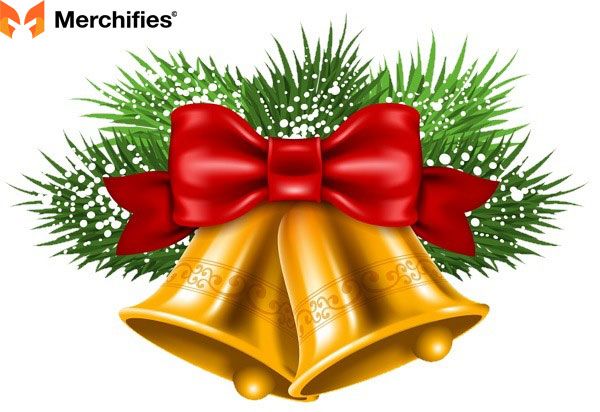
Large church bells with clappers visible inside sometimes appear on more traditional Christmas shirts. These designs connect to Christmas's religious aspects and historical traditions of church bell ringing. They appeal to people who appreciate classic Christmas imagery with historical depth.
Sleigh bells appear on Christmas shirts showing Santa's sleigh or winter scenes with horses pulling sleighs through snow. These designs emphasize Christmas's historical winter transportation methods and create nostalgic imagery of Christmases past when travel involved horses, sleighs, and the jingling sounds that warned of their approach.
Some Christmas shirts incorporate actual jingle bells as three-dimensional decorations sewn onto the fabric. These create interactive Christmas shirts that make sounds when wearers move. They appeal especially to children and people who enjoy playful, sensory Christmas fashion. However, the noise can become annoying, limiting these designs' practicality.
Bell symbolism on Christmas shirts communicates joy, tradition, and announcement. People wearing bell designs are proclaiming Christmas enthusiastically—they're ringing metaphorical bells to celebrate the season. This appeals to extroverted personalities who embrace holiday spirit openly and want their clothing to make joyful statements.
Wreaths
Circular wreaths made from evergreen branches appear on doors, walls, and Christmas shirts each December. Their perfect circles and fresh greenery make them instantly recognizable Christmas symbols, but their history extends back thousands of years to pre-Christian civilizations.
Ancient Greeks and Romans wove leafy branches into circular crowns for victorious athletes and military leaders. These wreaths symbolized triumph, honor, and glory. The circular shape represented eternity—no beginning, no end—suggesting that the wearer's achievements would be remembered forever. Laurel wreaths specifically became signs of distinction and success.
Pagans celebrating winter solstice used evergreen wreaths to symbolize the eternal cycle of seasons and the promise of spring's return. The circular shape represented the sun and its yearly journey. Evergreens represented resilient life continuing through winter's death-like conditions.
Christians adapted wreath symbolism, maintaining the circular eternity meaning but reinterpreting it as Jesus Christ's eternal love with no beginning or end. The evergreen materials came to represent eternal life through Christ. Christians also connected wreaths to Jesus's crown of thorns worn during crucifixion—this painful crown became transformed into celebratory evergreen wreaths, symbolizing how suffering led to redemption.
Advent wreaths became specific Christian traditions in 16th-century Germany. These wreaths hold four candles (sometimes five), with one candle lit each Sunday during Advent, the four-week period before Christmas. Each candle represents different aspects of waiting for Christ—hope, peace, joy, and love. The growing light as more candles are lit symbolizes approaching Christmas and Christ as the light entering the world.
On Christmas shirts, wreaths appear in various artistic styles. Traditional wreaths show evergreen branches twisted into circles, often adorned with red bows, pinecones, holly berries, or small ornaments. These realistic designs appeal to people who appreciate classic Christmas aesthetics and natural decoration.
Minimalist wreath designs show simple circles of green with minimal detail, creating clean, modern Christmas shirt graphics. These appeal to people who want festive clothing without visual complexity. A simple green circle immediately reads as "Christmas wreath" to most American viewers, making elaborate detail unnecessary.
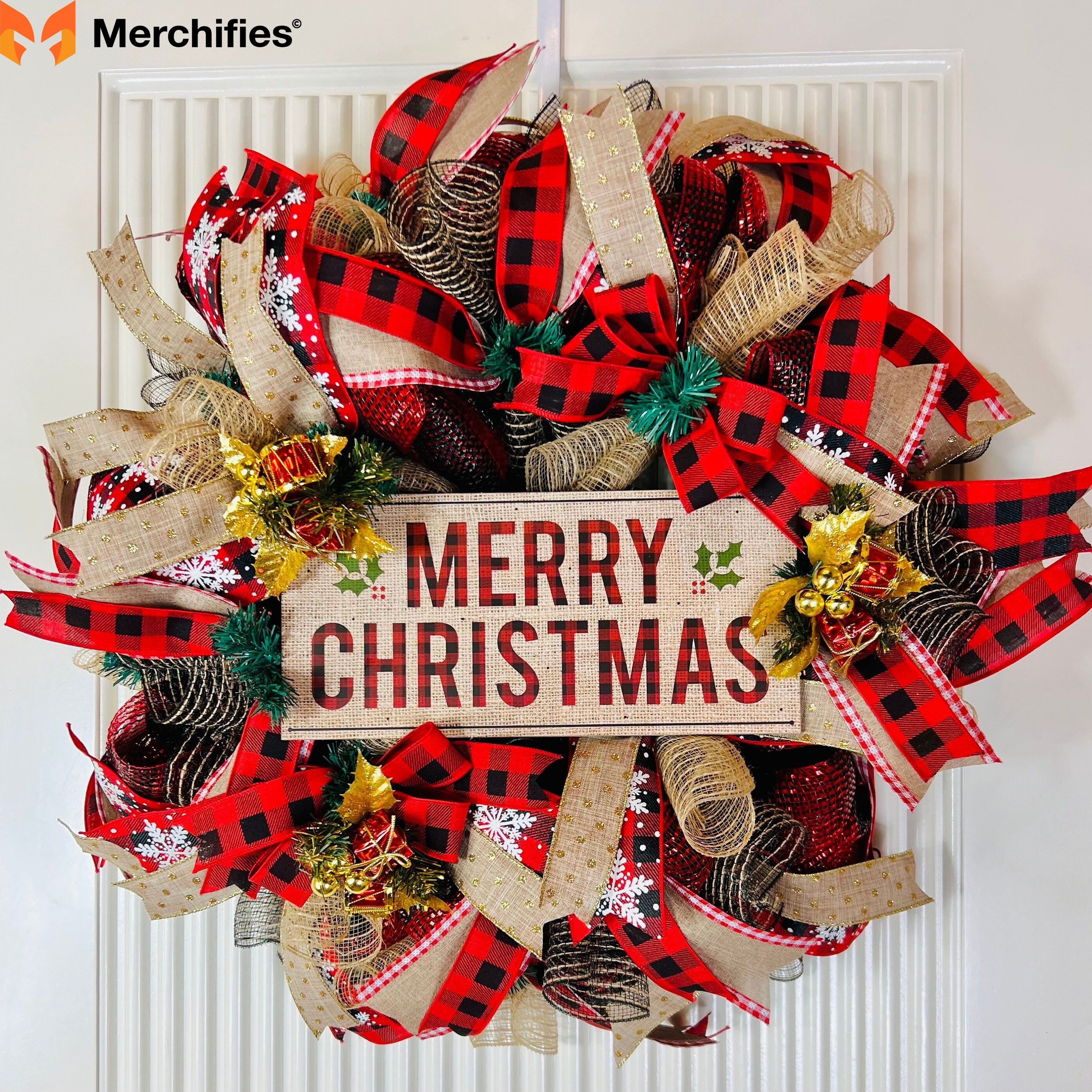
Wreaths often frame other Christmas shirt symbols or text, creating circular borders that focus attention on central messages. A wreath might surround a nativity scene, "Merry Christmas" text, or a family name. This design technique creates cohesive compositions while incorporating multiple Christmas symbols.
Door wreath designs on Christmas shirts show wreaths hanging on doors, sometimes with ribbons, welcome signs, or winter scenery visible around them. These designs reference the tradition of hanging wreaths on front doors as hospitality gestures welcoming visitors during the holiday season.
The psychology of wearing wreath Christmas shirt symbols connects to hospitality, home, and welcoming attitudes. Wreaths on doors signal that visitors are welcome—that homes are open and inviting during the holiday season. Wearing wreath symbols suggests a warm, welcoming personality that embraces community and togetherness. Wreaths also communicate appreciation for nature and natural decoration, appealing to people who prefer organic, botanical aesthetics over more commercial Christmas imagery.
Wreaths work across religious and secular Christmas celebrations. Their Christian symbolism matters to believers, while their botanical beauty and traditional associations appeal to secular celebrators. This versatility makes wreath Christmas shirts appropriate for diverse contexts.
Stockings
Red stockings hanging by fireplaces have become iconic Christmas imagery, appearing on countless Christmas shirts each year. But why do we hang stockings, and how did this peculiar tradition begin? The story traces back to Saint Nicholas, the 4th-century bishop who inspired the Santa Claus legend.
According to legend, a poor widower worried desperately about his three daughters' futures. Without dowries, they couldn't marry, and the father feared they'd fall into prostitution to survive. Saint Nicholas heard about this family's plight and wanted to help secretly—he believed in anonymous charity that wouldn't embarrass recipients by making them feel indebted.
One night, Nicholas crept to the family's home and tossed bags of gold coins through an open window. The bags landed in stockings that the daughters had hung by the fireplace to dry. The next morning, the daughters discovered the gold, which provided sufficient dowries for them to marry. This miracle of anonymous generosity became one of the most famous stories about Saint Nicholas and established his reputation as a gift-giver.
The tradition of hanging stockings hoping for Saint Nicholas (later Santa Claus) to fill them evolved from this legend. Children hang stockings on Christmas Eve, hoping to find them stuffed with small gifts, candy, and treats on Christmas morning. The stockings represent hope, anticipation, and the magic of waking to discover unexpected gifts.
Stockings also symbolize the value of small kindnesses. Unlike the major presents under Christmas trees, stocking stuffers are typically modest—small toys, candies, useful items. Yet children often remember their stockings as vividly as bigger presents. This suggests that accumulations of small joys matter as much as grand gestures—a lesson relevant to life beyond Christmas morning.
On Christmas shirts, stockings appear in various design contexts. Traditional designs show red stockings with white cuffs hanging from mantels, often with fires glowing in fireplaces behind them. These nostalgic images evoke cozy Christmas mornings and traditional family celebrations.
Personalized stocking designs show rows of stockings with names embroidered on them, representing all family members. These designs work particularly well for matching family Christmas shirts, with each person's shirt showing stockings labeled with actual family members' names. This creates personal, customized Christmas shirts that celebrate specific families.
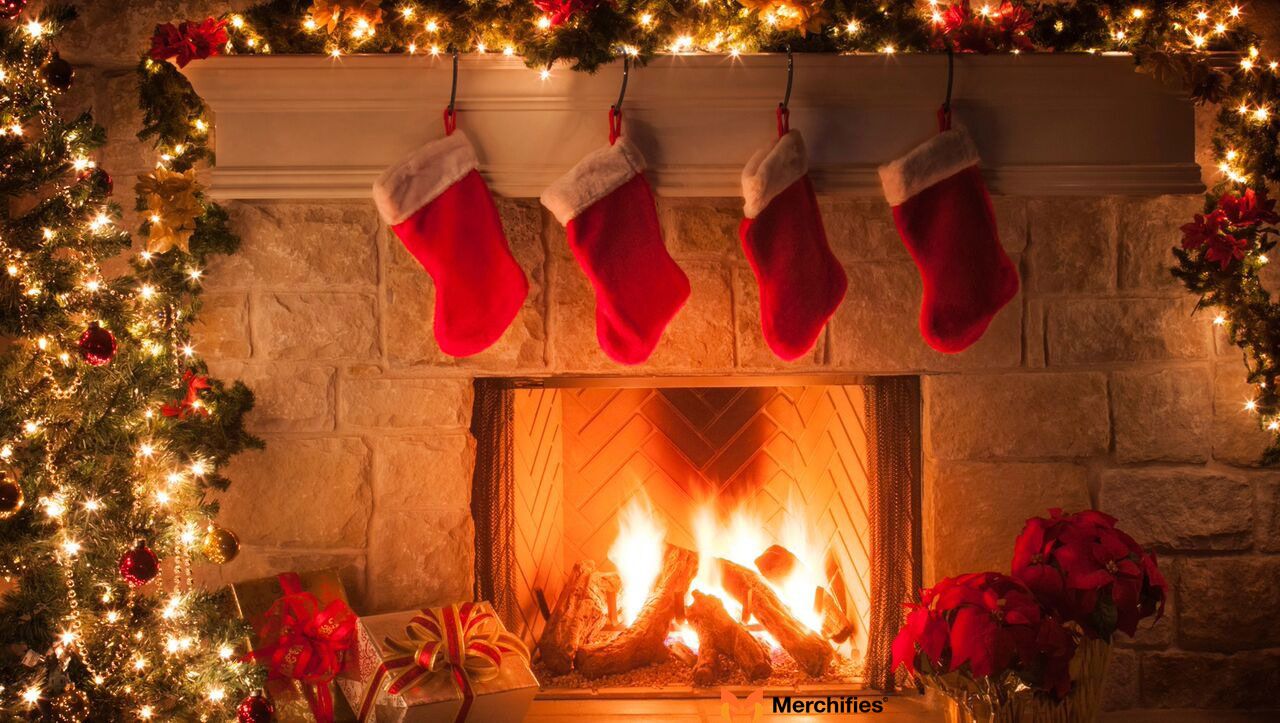
Individual stocking images appear on simple Christmas shirts, sometimes overflowing with candy canes, wrapped presents, and toys. These designs emphasize abundance and the joy of receiving gifts. They appeal especially to children who associate stockings with Christmas morning excitement.
Some humorous Christmas shirts show empty stockings labeled "Naughty list," suggesting the wearer didn't receive gifts due to bad behavior. These playful designs appeal to people with self-deprecating humor who enjoy acknowledging their imperfections. Other jokes involve stockings filled with unusual items—beer bottles, tools, or adult-oriented items—subverting the child-focused stocking tradition.
The psychology of wearing stocking Christmas shirt symbols connects to childhood memories and family traditions. Most Americans have strong stocking-related memories—the anticipation of Christmas morning, the ritual of checking what Santa left, the small surprises discovered. Wearing stocking symbols taps into this nostalgia, recreating those childhood feelings of wonder and excitement.
Stockings also represent the importance of tradition and ritual. Families develop specific stocking customs—perhaps certain candies always appear, or everyone receives matching pajamas, or handmade items fill the stockings. These traditions create family identity and continuity across generations. Wearing stocking Christmas shirts celebrates this tradition-keeping role that makes Christmas feel meaningful beyond commercial gift-giving.
Candles
Before electric lights became ubiquitous, candles illuminated Christmas celebrations. The soft, warm glow of candlelight created intimate, sacred atmospheres in churches and homes. Though less common now, candles remain powerful Christmas symbols, appearing on Christmas shirts to evoke both historical traditions and spiritual meanings.
Candles represent light penetrating darkness—both literally and metaphorically. In an era before electricity, winter darkness was profound. Long nights and short days made light sources precious and necessary. Candles provided illumination but also warmth and safety, making homes livable during cold, dark winter months.
Spiritually, candles symbolize hope, faith, and divine presence. Many religious traditions use candles in worship to represent spiritual light defeating evil darkness. Christianity specifically interprets Jesus as "the light of the world"—a divine illumination showing humanity the path to salvation. Christmas candles reference this theological concept, representing Christ's birth as light entering the world to guide humanity.
The tradition of putting candles on Christmas trees began in 16th or 17th century Germany. Small candles attached to tree branches made trees shimmer and glow, creating magical effects in darkened rooms. This dangerous practice (fire hazards were significant) gradually gave way to electric lights, but nostalgic images of candle-lit Christmas trees persist in artwork and Christmas shirt designs.
Advent candles carry specific Christian significance. The Advent wreath tradition involves lighting candles on four Sundays leading to Christmas. Each candle represents hope, peace, joy, and love. A fifth candle, sometimes called the Christ candle, is lit on Christmas Day representing Jesus's birth. This ritual creates anticipation and marks time, helping Christians prepare spiritually for Christmas rather than rushing toward it purely as a shopping deadline.
On Christmas shirts, candles appear in various forms. Traditional tapered candles in candlesticks create elegant, classical Christmas imagery. These designs suggest formal Christmas celebrations and historical tradition. They appeal to people who appreciate vintage aesthetics and the romance of candlelit celebrations.
Advent candles arranged in wreaths appear on explicitly Christian Christmas shirts, signaling the wearer's participation in Advent practices. These designs often show three purple candles (symbolizing penitence), one pink candle (joy), and a white Christ candle in the center. Such specific imagery communicates religious knowledge and commitment to Christian traditions.
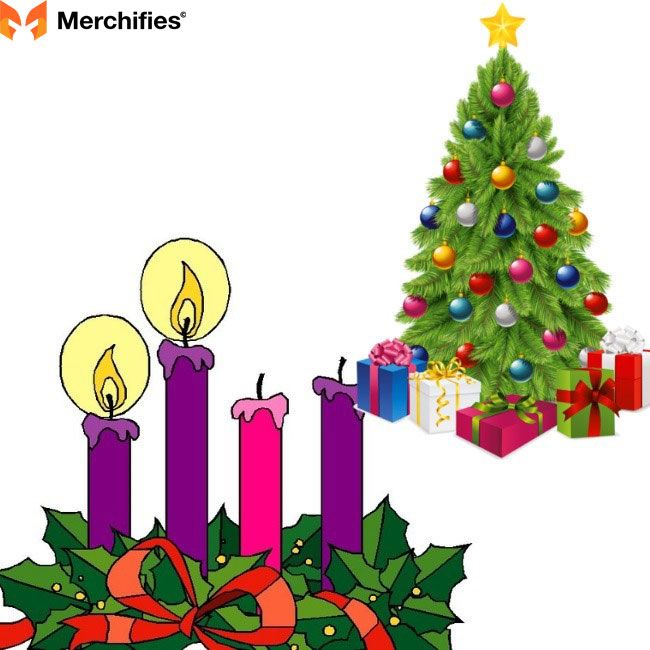
Glowing candles with light radiating outward create visually striking Christmas shirt designs. Artists use various techniques to suggest light emanating from flames—golden rays, soft halos, or impressionistic glows. These designs emphasize light's spiritual significance and create beautiful, artistic Christmas shirts suitable for dressier occasions.
Candles combined with other Christmas symbols—perhaps surrounding nativity scenes, held by carolers, or lighting Christmas trees—create narrative compositions that tell visual stories. These complex designs appeal to people who appreciate detailed artwork and layered symbolism.
The psychology of wearing candle Christmas shirt symbols connects to spirituality, hope, and contemplative attitudes toward Christmas. People selecting candle designs tend to value Christmas's quieter, more reflective aspects over its boisterous party culture. They appreciate intimacy, warmth, and sacred atmosphere. Candle imagery appeals to introverts and people seeking meaning deeper than surface-level celebration.
Candles also represent tradition and historical continuity. Wearing candle Christmas shirts acknowledges that Christmas existed long before our modern commercialized version. This appeals to people frustrated by Christmas's materialism who want to reconnect with simpler, more meaningful celebrations from earlier eras.
Traditional Christmas shirt symbols like trees, bells, wreaths, stockings, and candles create a visual language understood across generations. These symbols bridge past and present, connecting us to ancestors who celebrated Christmas centuries ago while remaining relevant to contemporary holiday experiences. Understanding their meanings enriches our appreciation of these ubiquitous Christmas graphics and helps us choose Christmas shirt symbols that align with our personal values and Christmas traditions.
FAQ SECTION
Q1: What are the most popular Christmas shirt symbols? Comprehensive answer covering Santa, reindeer, snowflakes, trees, candy canes with popularity data
Q2: What does Santa symbolize on Christmas shirts? Religious origins, secular meanings, design psychology
Q3: Why are reindeer popular Christmas graphics? Historical background, Rudolph phenomenon, design appeal
Q4: What do snowflakes mean on Christmas shirts? Scientific uniqueness, religious six-sided significance, aesthetic appeal
Q5: Are Christmas shirt symbols religious or secular? Both - explain dual meanings, inclusive options
Q6: What Christmas symbols are best for religious families? Nativity, angels, stars, crosses, religious text options
Q7: What symbols work for secular Christmas celebration? Snowflakes, trees, Santa (non-religious context), winter themes
Q8: How do I choose appropriate Christmas shirt symbols for work? Professional guidelines, neutral symbol selection, humor boundaries
Q9: What do color choices mean in Christmas graphics? Red, green, white, gold symbolism and psychology
Q10: Can I mix religious and secular Christmas symbols on one shirt? Design considerations, respectful combination, examples
Q11: What Christmas symbols appeal to children vs. adults? Age-appropriate symbol preferences, design differences
Q12: How have Christmas shirt symbols changed over time? Decade-by-decade evolution, trend cycles
Q13: What makes a Christmas symbol "ugly sweater" style? Intentional tackiness, maximalist design, ironic appreciation
Q14: Are there cultural differences in Christmas shirt symbols? International variations, adaptation in different countries
Q15: How can I create custom Christmas shirt symbols? DIY tips, design principles, personalization ideas